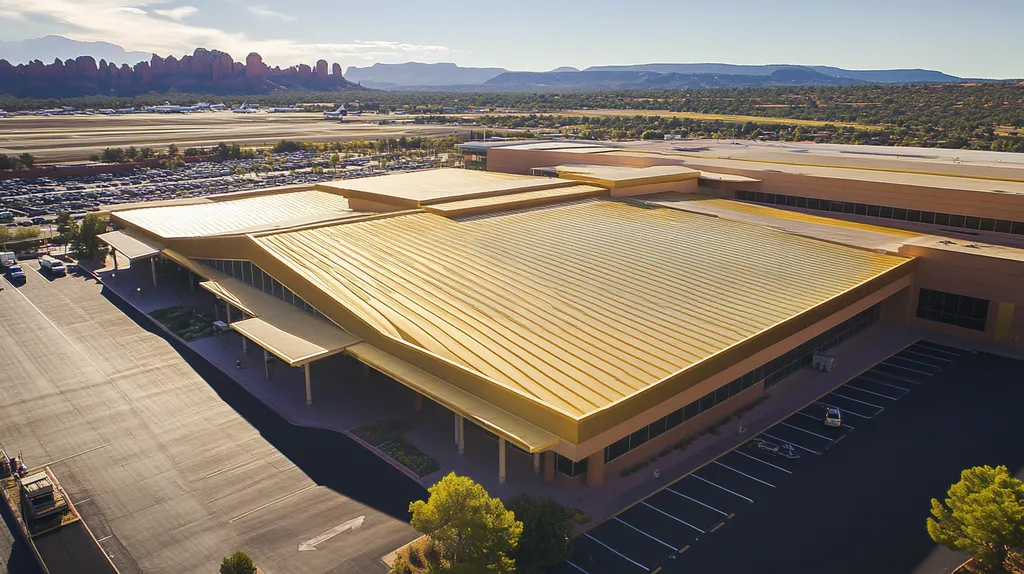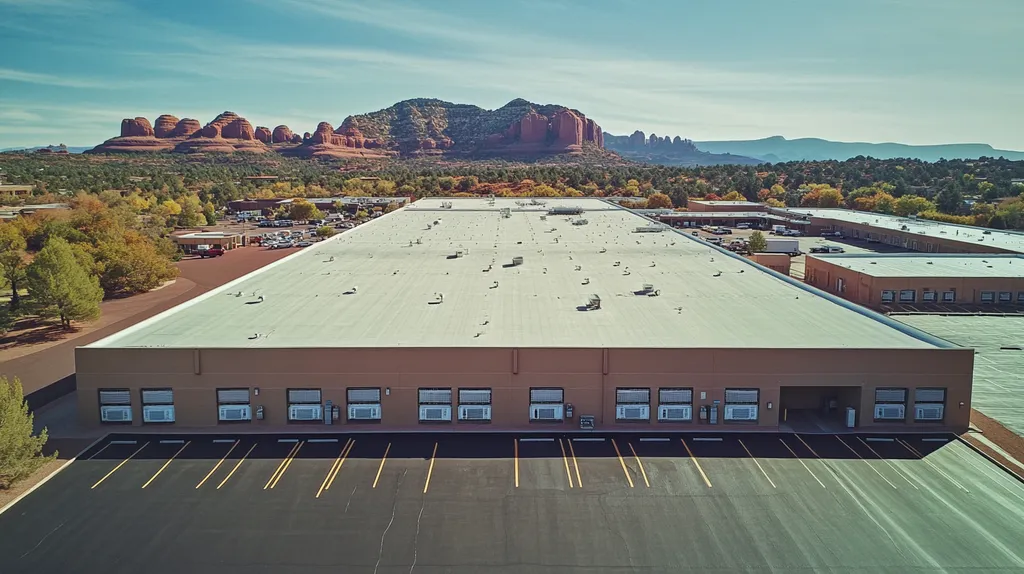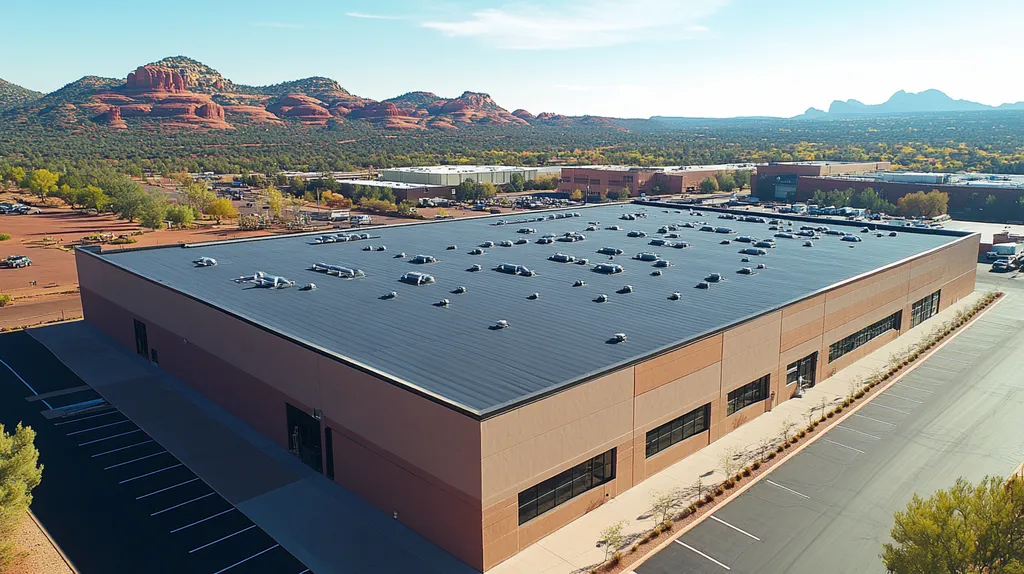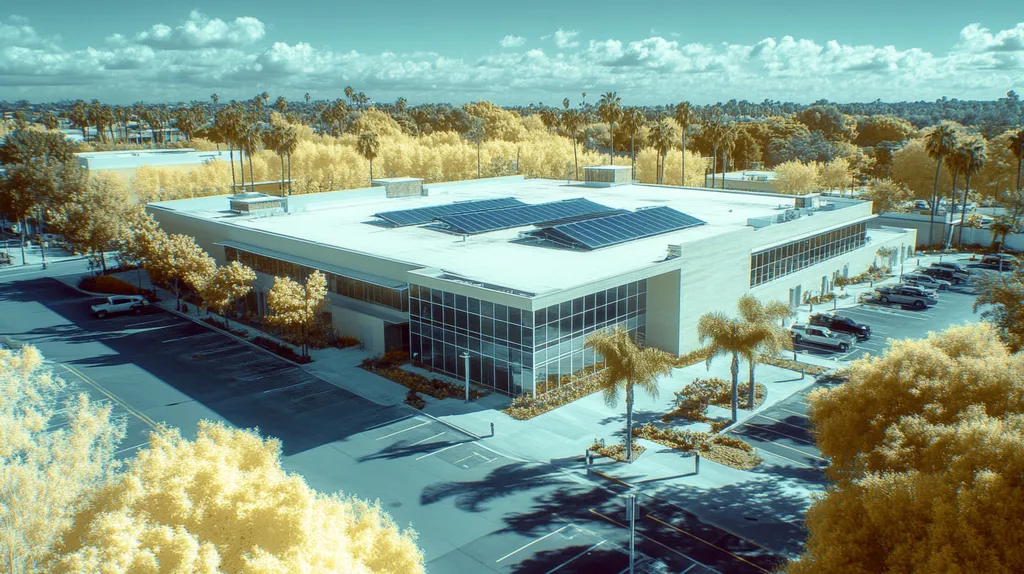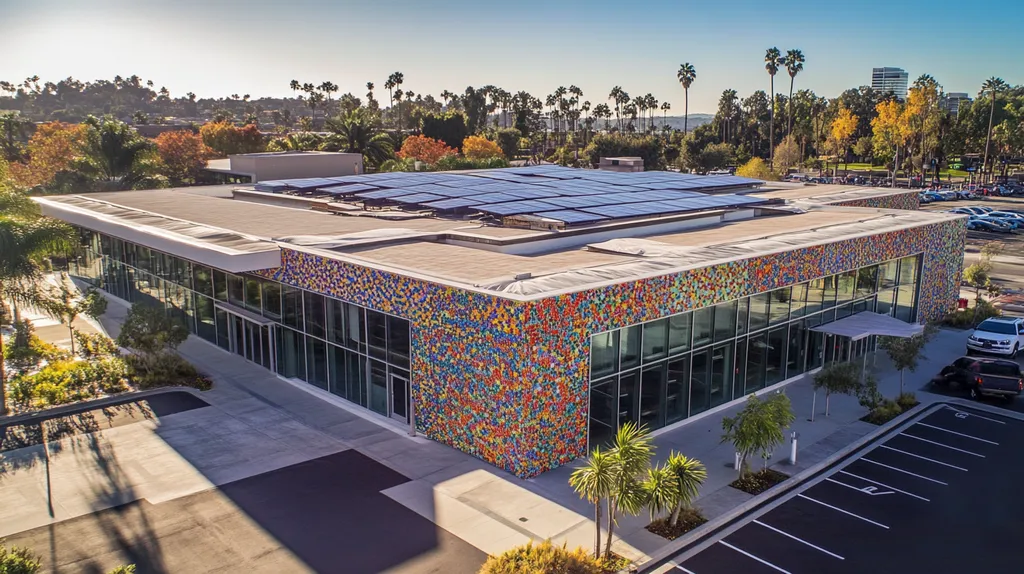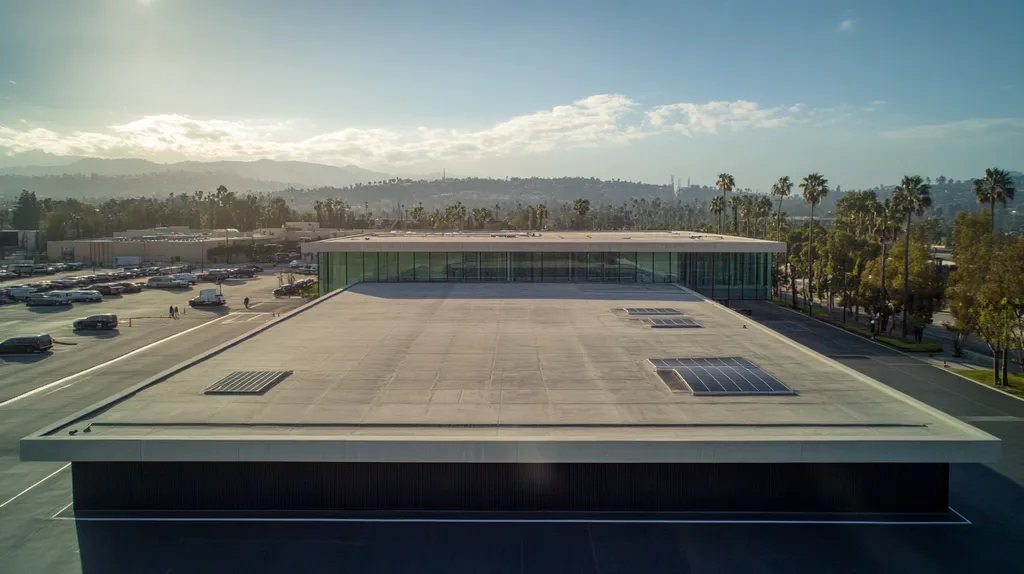In today’s commercial real estate landscape, outdated roofing practices are quietly draining both energy resources and profits. With buildings accounting for nearly 40% of global energy consumption, the stakes couldn’t be higher for property owners and facility managers.
While various certifications and standards exist for energy-efficient roofing, navigating this complex terrain often feels like decoding a secret language. From ENERGY STAR to LEED certification, each program offers unique benefits and requirements.
This comprehensive guide demystifies the certification maze, breaking down essential standards, implementation strategies, and the concrete benefits of pursuing certified energy-efficient roofing practices.
SECTION 1: THE BASICS EXPLAINED
Energy-efficient roofing isn’t just a buzzword; it’s essential for creating sustainable commercial spaces. Buildings are responsible for nearly 40% of global energy consumption. By prioritizing energy-efficient roofing, property owners can significantly cut down on both utility costs and their environmental impact. This section breaks down the key components of energy-efficient roofing practices, explaining what they are, why they matter, and how to implement them effectively.
What It Is (In Plain Language)
Energy-efficient roofing revolves around materials and systems crafted to reduce a building’s energy use. Think reflective surfaces that keep heat at bay, smart insulation that locks in warmth, and green roofs boasting a lush layer of vegetation. These strategies work in concert to diminish heating and cooling needs, making your building more comfortable and economically efficient.
Popular materials such as thermoplastic polyolefin (TPO), ethylene propylene diene monomer (EPDM), and reflective roof coatings each bring unique benefits, from reflecting sunlight to enhancing insulation. By familiarizing themselves with these choices, property owners can make savvy decisions that align with their sustainability aspirations.
This isn’t just about looks or meeting regulations; it’s part of a broader movement toward intelligent design and environmental stewardship. Energy-efficient roofing signifies a comprehensive strategy that prioritizes both long-term financial savings and ecological responsibility.
As our reliance on energy grows, embracing energy-efficient roofing practices is a vital step toward sustainability. The rewards are multifaceted, from slashing energy bills to improving indoor air quality and even boosting property values.
Why It Matters (To Your Building)
Embracing energy-efficient roofing can profoundly enhance a building’s overall performance. These roofs lead to significantly lower energy bills, resulting in impressive savings over time. For instance, a well-insulated commercial roof may slash heating costs by up to 30%, freeing up budgetary resources for other priorities.
Additionally, many energy-efficient roofs qualify for tax incentives and rebates from government programs aiming to promote sustainability. This financial support can alleviate initial installation costs and provide further economic benefits, enhancing a property’s return on investment.
On a larger scale, these roofs are crucial in combating climate change. By curbing energy consumption, buildings contribute to a reduction in greenhouse gas emissions associated with fossil fuel energy generation, fostering a healthier environment and supporting global anti-climate-change efforts.
Ultimately, property owners should view energy-efficient roofing as a key element of responsible building management. By investing in these solutions, they play a role in sustainable development while reaping the benefits of increased property value and elevated tenant satisfaction.
How It Works
Energy-efficient roofing operates on the principles of effective heat management and insulation. Reflective materials deflect sunlight away from the building, keeping indoor temperatures cooler and minimizing reliance on air conditioning—a crucial factor in warmer climates, where high temperatures can lead to overwhelming energy bills.
In contrast, colder climates require robust insulation to reduce heat loss. Energy-efficient roofs employ cutting-edge materials that retain warmth during winter months, ensuring that buildings don’t waste energy on heating. This balanced temperature control creates a smoother seasonal transition, enhancing occupants’ comfort.
Moreover, incorporating green roofs adds another layer of innovation to energy efficiency. These systems absorb rainwater, provide insulation, and reduce the urban heat island effect—all while adding beauty to the landscape. They also contribute to biodiversity, underscoring the myriad advantages of energy-efficient roofing.
Finally, proper installation and regular maintenance are crucial for these roofs’ success. Routine inspections can catch potential problems early, ensuring that energy-saving features work their magic throughout the roof’s lifespan. This proactive approach plays a significant role in long-term energy management.
SECTION 2: PRACTICAL APPLICATIONS
The urgency for energy-efficient roofing practices in commercial spaces has never been more critical. With commercial buildings contributing nearly 40% of global energy consumption, adopting sustainable solutions isn’t just smart—it’s essential. Implementing energy-efficient roofing not only trims energy costs but also boosts building durability and occupant comfort. This section explores common applications, ideal scenarios for these roofing strategies, and how they work hand-in-hand with other building systems.
Common Uses & Examples
Energy-efficient roofing systems are remarkably versatile and can be customized for a variety of commercial uses. One common implementation is reflective roofing materials that can dramatically lower cooling costs. For instance, a white TPO (thermoplastic polyolefin) roof can drop surface temperatures substantially, making a big difference in energy bills.
Green roofs are another exciting option, providing dual benefits as they insulate buildings and manage stormwater runoff. These gardens in the sky are especially popular in urban areas, where every square foot counts in the sustainability game.
Advanced single-ply membranes are gaining traction due to their durability and energy-saving capabilities. Offering excellent resistance to the elements, they help mitigate energy overheating while also standing strong against weather challenges.
Recognizing these applications allows property owners to select the most fitting roofing solutions, ensuring both performance and compliance with evolving energy standards.
When You Need It Most
Energy-efficient roofing practices are particularly beneficial during the planning and design phases of a building project. Implementing these strategies early ensures they blend seamlessly into the overall design, maximizing potential energy savings. For example, considering roof options from the outset can greatly impact heating and cooling load calculations.
Facility managers would do well to prioritize energy-efficient solutions during major renovations or roof replacements. Investing in these options at pivotal moments can yield significant long-term savings on energy costs.
For buildings in extreme climates, the benefits can be even more pronounced. A roof designed to reflect sunlight can dramatically cut cooling expenses in hotter regions. Hence, high-performance roofing should be a top priority where temperatures are on the rise.
Recognizing these critical moments presents an opportunity for lasting energy efficiency improvements that can pay dividends for years to come.
Interactions With Other Systems
Energy-efficient roofing systems are not stand-alone solutions; they interact harmoniously with other building systems to create a cohesive energy management strategy. For example, a cool roof can enhance HVAC performance by lowering the overall heat load, leading to reduced energy consumption.
Moreover, integrating roofing systems with solar panels further amplifies energy savings. When a reflective roof collaborates with solar technology, the building’s overall energy efficiency sees substantial enhancement.
Proper insulation above the roof deck also plays a crucial role, boosting the performance of energy-efficient roofing. This ensures that the interior remains comfortably regulated while keeping energy usage to a minimum.
By understanding these interactions, property owners and facility managers can make informed roofing decisions that maximize both energy savings and occupant comfort.
SECTION 3: KEY TERMINOLOGY DECODED
Grasping the terminology surrounding energy-efficient roofing is not just beneficial; it’s vital for averting costly missteps. A lack of understanding can result in inefficiencies and overspending. According to the U.S. Department of Energy, upgrading to energy-efficient roofing can lower building energy costs by as much as 20%. By mastering key terms, facility managers and property owners can skillfully navigate the complexities of sustainable roofing practices.
Essential Terms Explained
Energy-efficient roofs come with specific terminology that is crucial to comprehend. For example, “reflectivity” signifies how well roofing materials can bounce back solar energy. The more reflective a roof, the less heat it absorbs, significantly slashing cooling costs, particularly in warmer climates.
Another key term is “insulation R-value,” which measures a roof’s resistance to heat flow. A higher R-value translates to better insulation effectiveness, leading to reduced energy consumption. This superior insulation ensures a cozy environment year-round—keeping buildings warm in winter and cool in summer.
“Green roofing” is also critical; it refers to roofs that support vegetation. This practice not only provides insulation but also helps lower urban temperatures. Property owners should weigh this option for its combined aesthetic allure and energy savings capabilities.
Being well-versed in these terms sets the stage for informed decisions, thereby enhancing a building’s energy performance and sustainability credentials.
Industry Jargon Translated
The roofing industry is filled with terms that might make the uninitiated feel like they’re deciphering a new language. One such term is “cool roofs,” which are specifically designed to reflect more sunlight and absorb less heat than conventional roofs. This technology can significantly decrease energy demands, especially in sunny locales.
“LEED Certification” is another important term to know. It indicates that a building meets rigorous standards for energy efficiency and sustainability. Facility managers aiming to up their building’s value should consider pursuing this certification, as it appeals to tenants who prioritize environmental responsibility.
Moreover, “thermal imaging” is a nifty technique used to identify heat loss in roofs. It helps facility managers spot insulation issues that might be causing energy leaks. Understanding these terms can empower property owners to choose the right roofing solutions that maximize energy efficiency.
By demystifying this jargon, property owners can engage effectively with contractors, leading to sound decisions that influence their bottom line.
Measurement & Units Simplified
When navigating roofing decisions, familiarity with measurement units is crucial. For instance, the roof area is generally expressed in square feet, which plays a critical role in determining material requirements and assessing energy efficiency.
Another key metric is the “solar reflectance index (SRI),” which combines a roofing material’s reflectivity and thermal emittance. This index measures how effectively a roof can reduce heat absorption. A higher SRI means a cooler roof, which translates to lower cooling costs.
Facility managers should also keep an eye on energy use intensity (EUI), which gauges a building’s energy consumption per square foot annually. This valuable information assists in evaluating current energy performance and charting improvement goals.
By understanding these measurements and units, property owners can make informed evaluations of roofing options to ensure they align with energy-efficient practices.
SECTION 4: DECISION FACTORS
Making the leap to energy-efficient roofing isn’t just a matter of preference; it’s a strategic decision that can shape a property’s financial health and environmental impact. As the call for sustainable solutions grows louder, the advantages of energy-efficient roofs, such as a potential 30% cut in cooling expenses, become all the more compelling. Property owners must sift through various factors, including upfront costs, long-term performance, and the durability of roofing options, to align their decisions with both fiscal prudence and eco-friendly ambitions. This section will unpack cost considerations, performance trade-offs, and the vital aspects of lifespan and durability.
Cost Considerations
Initial costs can be a stumbling block for property owners contemplating energy-efficient roofing. While traditional systems may appear more budget-friendly at first glance, the long-term savings from energy-efficient solutions can’t be overlooked. For example, cool roofs may involve a higher upfront investment, yet they promise substantial reductions in energy bills over time.
Furthermore, property owners should explore available tax incentives and rebates aimed at encouraging energy efficiency. Many regions offer financial perks for installing such roofs, effectively enhancing the return on investment. A thorough financial analysis can unveil the total cost of ownership, showcasing potential savings on both energy and maintenance.
It’s crucial to remember that the true operational costs extend beyond that initial investment. An energy-efficient roof often translates into lower HVAC expenses, decreased repair frequency, and a longer lifespan, making it a wise asset despite higher initial costs.
Performance Trade-offs
When choosing roofing systems, property owners must carefully assess performance trade-offs. Energy-efficient materials generally boast impressive thermal efficiency, contributing to overall building performance. However, the insulation properties and longevity can vary significantly across options, making comparisons essential.
Take reflective roofs, for instance—they excel at lowering cooling costs but might not provide optimal insulation during winter months. Selecting the right roofing solution requires a keen understanding of the local climate and building function, striking a balance between energy efficiency and practical performance.
Additionally, regular maintenance is pivotal. Energy-efficient roofs may demand a different care routine than traditional systems, and facility managers must acclimate to these requirements to ensure the roofing performs optimally throughout its lifespan.
Lifespan & Durability Factors
The lifespan and durability of roofing materials are fundamental considerations in any roofing decision. Many energy-efficient options are engineered for extended service life, resulting in fewer replacements and repairs over time. Grasping the expected lifespan can help property owners better forecast future expenses and assess sustainability impacts.
Durability also varies greatly among energy-efficient roofing solutions. Materials like TPO or PVC are celebrated for their resilience against weather elements and prolonged service. In contrast, certain options may be more prone to damage in extreme conditions, reinforcing the importance of informed selection.
Ultimately, installing a roof that is both durable and long-lasting minimizes disruptions and associated costs, creating a more stable financial picture for facility managers. With informed choices, property owners can ensure their roofing investment pays off through reduced maintenance and diminished energy costs over time.
SECTION 5: COMMON CHALLENGES
With the rising demand for energy-efficient commercial roofs, navigating the challenges becomes paramount. Commercial buildings currently account for nearly 40% of the country’s energy consumption, underscoring the need for effective roofing practices. Issues like improper installation, inadequate maintenance, and material degradation can thwart energy efficiency and tarnish sustainability goals. By identifying these hurdles and implementing viable solutions, property owners can enhance both financial performance and environmental integrity.
Frequent Problems & Solutions
One of the most common challenges facing energy-efficient roofs is improper installation. If roofing systems don’t adhere to manufacturer specifications, leaks and insulation failures can emerge. Engaging certified contractors who specialize in energy-efficient roofing practices is essential. Regular training on the latest technologies and standards ensures that roofing professionals are up to date with best practices.
Another persistent issue is insufficient insulation. Without quality insulation, heat escapes in winter and invades during summer, inflating energy bills. Property owners can address this by selecting high-quality insulation materials. Additionally, conducting annual energy audits helps pinpoint underperforming areas, enabling targeted upgrades that bolster efficiency.
Moisture accumulation poses a significant risk, potentially causing structural damage and lowered performance. Establishing a consistent inspection schedule facilitates early detection of leaks or moisture problems. Regular maintenance, such as cleaning gutters and drains, keeps roofing systems in top shape and extends their lifespan.
Finally, material degradation over time can undermine the roof’s effectiveness. Opting for durable, weather-resistant materials and securing a solid warranty ensures long-term benefits. Investing in high-quality materials ultimately reduces maintenance costs and enhances energy savings.
Warning Signs To Watch For
Property owners must remain alert to warning signs that indicate potential roofing issues. Dark spots or standing water on the roof can signal water retention, a precursor to leaks. Regularly monitoring for these signs allows for prompt interventions, preventing extensive damage.
A sudden spike in energy bills is another red flag. When a roof loses its efficiency, HVAC systems work overtime to keep indoor temperatures stable, leading to inflated energy costs. Keeping tabs on energy expenditures offers insightful data on roofing performance.
Crumbling or cracked roofing materials often signal underlying problems. Structural integrity is vital, and any visible damage warrants immediate inspection. Addressing wear and tear promptly ensures that minor issues don’t snowball into costly repairs.
Additionally, inconsistent interior temperatures can hint at energy loss. When different areas in a building exhibit wide temperature fluctuations, it signals weaknesses in insulation. Identifying and remedying these gaps can significantly boost energy efficiency.
Preventative Approaches
A proactive maintenance strategy is indispensable for preserving energy-efficient roofs. Implementing a systematic schedule for inspections and upkeep ensures that minor issues are addressed before they escalate. This foresight can save time and resources in the long run.
Educating facility managers and maintenance personnel on roofing technologies enhances overall performance. Training programs focused on best practices for inspections and maintenance can greatly reduce risks associated with neglect.
Investing in high-quality roofing materials, such as reflective membranes and green roofing systems, further enhances long-term energy efficiency. These materials not only boost building performance but also contribute to lower overall energy consumption.
Finally, fostering a strong relationship with certified roofing contractors ensures timely interventions when problems arise. Regular consultations facilitate strategic planning for repairs or upgrades, keeping roofs optimized for energy efficiency.
SECTION 6: NEXT STEPS & RESOURCES
As the spotlight on sustainable building practices grows brighter, energy-efficient roofing emerges as a fundamental aspect of commercial property management. With energy costs soaring and environmental concerns escalating, it’s vital for property owners and facility managers to prioritize energy-efficient roofing solutions. By asking the right questions and leveraging available resources, navigating this complex landscape can transform into a straightforward journey. This section delineates critical inquiries, industry standards, and avenues for further learning.
Questions To Ask Providers
When engaging with roofing contractors, focusing on specific questions is essential for making informed decisions. Key inquiries should include: What energy-efficient materials do you provide? Are these options compliant with recognized industry standards? Additionally, questions about warranties and performance guarantees should not be overlooked, as these can significantly impact long-term savings.
Understanding the contractor’s experience with energy-efficient practices can also be a game changer. Inquire about their portfolio of previous projects and any relevant certifications they hold. This can offer valuable insights into their expertise and dedication to sustainable solutions.
Don’t underestimate the significance of understanding their installation processes. Proper installation is crucial for reaping the full benefits of energy-efficient roofing. Clarifying these details ensures that the provider’s methods align with best practices and standards.
Lastly, always ask about ongoing support and maintenance services. A reputable provider should offer resources for regular roof assessments and potential upgrades, both of which are vital for sustaining energy efficiency over time.
Industry Standards & Guidelines
The roofing industry boasts numerous standards and guidelines that emphasize energy efficiency. Becoming familiar with organizations such as the Cool Roof Rating Council and the Energy Star program can be invaluable. These entities establish benchmarks for materials and practices that elevate roof performance and sustainability.
ISO standards also contribute significantly to this framework. The International Organization for Standardization offers guidelines that facilitate energy management within buildings, ensuring compliance with international best practices.
Moreover, local and national building codes frequently integrate energy efficiency measures that must be adhered to. Grasping these codes aids property owners in avoiding costly fines or retrofitting down the line. Consulting local authorities can provide insight into applicable standards.
Staying attuned to changes within these standards and guidelines is essential. The roofing landscape continuously evolves with innovations in technology and materials. Regular reviews can lead to smarter investments and improved building performance.
Further Learning Simplified
Investing in ongoing education about energy-efficient roofing can yield considerable benefits. Many organizations offer training sessions, webinars, and workshops specifically geared towards property owners and facility managers, demystifying complex industry concepts.
Online resources, such as industry publications and research articles, provide a treasure trove of information. Staying updated on the latest trends and technologies aids in better decision-making and strategic planning.
Networking with industry professionals can also unlock new insights. Participating in local trade shows and conferences presents opportunities to engage with experts and discover innovative products.
Additionally, consider participating in online courses or certification programs focused on energy efficiency in roofing. These initiatives can not only bolster knowledge but also showcase a commitment to sustainability, appealing to clients and stakeholders alike.
The Bottom Line
With commercial buildings accounting for 40% of global energy consumption, the imperative for certified energy-efficient roofing has never been clearer.
Property owners who delay adopting these practices risk not just escalating energy costs, but also diminishing property values in an increasingly sustainability-focused market.
The roadmap to implementation is straightforward: select certified contractors, utilize approved materials, and maintain proper documentation of energy-efficient practices.
The investment in certified roofing solutions typically pays for itself within 3-5 years through reduced energy costs, while simultaneously future-proofing properties against tightening environmental regulations.
The question is no longer whether to embrace certified energy-efficient roofing practices, but rather how quickly they can be implemented to maximize returns and minimize environmental impact.
FREQUENTLY ASKED QUESTIONS
Q. What is energy-efficient roofing for commercial roofs?
A. Energy-efficient roofing is designed to reduce energy consumption in buildings. It utilizes materials and systems that reflect sunlight, insulate effectively, and can even incorporate vegetation. This makes your commercial roof not only appealing but also economically savvy and environmentally friendly.
Q. How can I apply energy-efficient roofing to my industrial roof?
A. Implementing energy-efficient roofing involves selecting suitable materials. Reflective coatings can minimize heat absorption, while green roofs manage stormwater and enhance insulation. Engaging with qualified contractors helps ensure these solutions work harmoniously with your industrial building’s unique needs.
Q. What terms should I understand about commercial roofs?
A. Key terms include “reflectivity,” which measures how well roofing materials resist heat absorption, and “R-value,” indicating insulation efficiency. Understanding these terms can help you make informed decisions that enhance energy performance for your commercial roof.
Q. What costs should I consider for my commercial roof?
A. While initial expenses for energy-efficient roofs may be higher, consider long-term savings on energy bills. Additionally, explore tax incentives that can ease upfront costs. Analyzing total ownership costs reveals the financial benefits of these sustainable roofing solutions.
Q. What common challenges occur with energy-efficient roofing?
A. Frequent problems include improper installation and insufficient insulation. These can lead to energy inefficiencies and increased costs. Regular inspections and engaging certified roofing professionals mitigate these issues and ensure optimal roof performance.
Q. What should I ask contractors about the commercial roof?
A. Inquire about the specific energy-efficient materials they offer and if they meet industry standards. Understanding their experience and installation processes is vital for ensuring successful implementation. Don’t forget to ask about maintenance and support services as well!
Q. How can I keep my commercial roof energy efficient?
A. Regular maintenance and inspections are key. Establishing a systematic schedule for checks helps catch issues early. Additionally, using high-quality materials enhances the roof’s durability and energy efficiency, ensuring it performs optimally over its lifespan.

